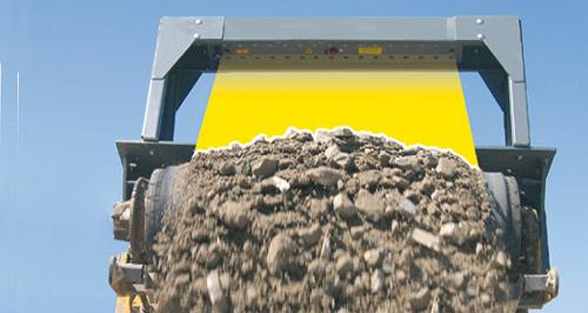Belt scales & weigh feeder
The non-contact alternative
We work with you to optimise the measurement of your bulk flow

Immediate advice: +49 (0) 29 61 – 96 56 86
The added value to you
Non-contact
Versatile
Durable
Wide-ranging
Controlled
Independent
Uncomplicated
Why is the optical belt scale the right choice for my plant?

With the benefit of our many years of experience we help you to select the optimum measurement system for your application.
+49 (0) 29 61 – 96 56 86
You are probably familiar with the following situation:
Conventional gravimetric belt scales are not suitable for your application or you are seeking an alternative to weight-loaded scales.
You need a precise, maintenance-free flow measurement system for your conveyor belt or would like to calculate the volume stream instead of the mass flow.
The ideal solution:
The optical belt scale offers you non-contact measurement of the product flow (t/h or m³/h) and the volume transported on your conveyor belt.
This measurement system is suitable for belt widths from 600 to 1,800 mm and for practically all types of belts.
Upon request, we will gladly send you a series of information about our products, starting with the access to our data sheets.
How does the optical belt Scale work?
The optical belt Scale records the volume flow on the conveyor belt without contact. The system is equipped with lasers. The number of lasers depends on the belt width.
The laser beams are directed to the surface of the conveyed goods and are reflected back by them. A photo diode detects the reflected laser beams.
The change in the angle of incidence is used to calculate the distance of the conveyed medium from the belt surface and from this the layer height is calculated by triangulation.
The large number of sensors makes it possible to take exact optical measurements of the material profile on the belt. As with a conventional, gravimetric belt scales the speed of the conveyor belt is determined by means of an inductive sensor.
The sensor calculates the actual volume flow from by multiplying the speed of the belt and the cross-section profile detected in high resolution. The calculated volume flow is integrated by the electronic system and is saved as the absolute transported volume.
Different bulk densities can be stored inside the electronics for a variety of products. For this reason, the volume flow (m³/h) for every product can be individually converted into a mass flow.
The collected data are saved in the sensor’s electronics for up to one year. Access is possible via a Bluetooth connection or serial interface.
Bluetooth and a robust mobile phone with specialised software are used to adjust and calibrate the belt scale. In this way, the data can be forwarded and processed by e-mail, Bluetooth or by an USB cable.
For stationary applications there is an analogue output (4 – 20 mA) to transmit the current flow and an impulse output to transmit the absolute volume.
Technical data
Belt widths:
600 to 1,800 mm (larger scales on request)
Dimensions (L x W x H):
663 to 1,815 x 160 x 137 mm
Weight:
7.1 kg up to 20.7 kg
Power supply:
24 VDC (+/- 20%), 5 A
Operating temperature:
-45°C to +70°C
Measuring points / second:
3,200
Measurement accuracy distance measurement:
+/- 0,4 mm
Number of measurement lasers:
13 to 16
Maximum installation height above belt:
Up to 950 mm
Maximum product height on the belt:
Up to 680 mm
Laser class:
IEC 60825-1:2001 class 3b
Pulse power Pmax:
60 mW/laser
Pulse duration /pulse:
400 µs
Laser wavelength λ:
785 nm
Pulse repetition rate:
200 Hz
Data memory:
Up to 1 year
Interfaces:
Bluetooth (standard),
Analogue output 4 – 20 mA,
Impulse output,
Serial interface RS-422 (4-conductor)
